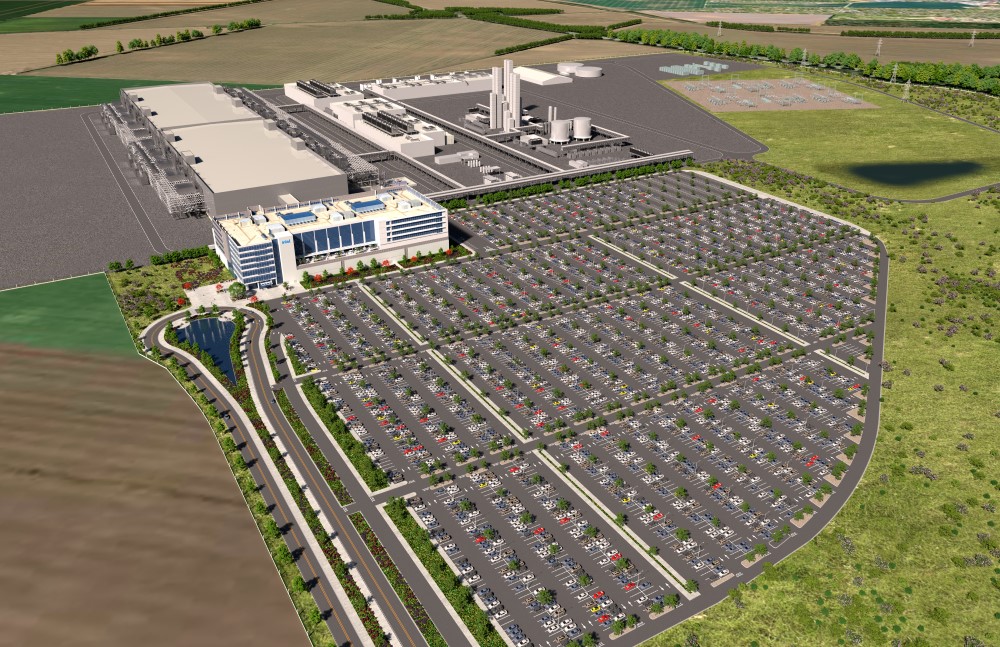In June 2021, the US Senate passed a law called the U.S. Innovation and Competition Act (USICA). Its goal is to empower American industry in global technology competition.
For half a year, nothing happened. Then, at the end of November, Commerce Secretary Gina Raimondo called the House of Representatives to release $52 billion in subsidies for the "Creating Helpful Incentives to Produce Semiconductors" (CHIPS) project.
But these massive industrial subsidies are controversial in the US. Shouldn’t keeping the public administration alive as well as fighting the Covid-19 impacts be prioritised?
Only two days after Raimondo's appeal, 59 top American managers, among them Apple's Tim Cook and Intel's CEO Pat Gelsinger, sent a letter to the leaders of U.S. Congress. Content: Action must be taken to restore American competitiveness in chip developing and manufacturing – quickly.

Intel has lost its global leadership to chip giants TMSC in Taiwan and Samsung in South Korea by 2020 at latest, not only in terms of annual sales, but also – and this is much worse in perspective – technologically.
Pat Gelsinger joined Intel in 1979 at the age of 18 and stayed with the company for 30 years, until 2009, when he was Intels Senior Vice President, assigned for ending rival AMD's leadership in multicore processors. "Thats what great companies do." is how the avowed Christian and dominical Bible verse twitterer Pat Gelsinger characterised his mission in those days.
Intel brought Gelsinger back to the company in February 2021, this time as CEO and with a new challenge: bringing back chip leadership from Southeast Asia to Intel. Up to then, Intels strategy was focusing on global shopping. Just as Gelsinger re-joined the company, Intel announced the purchase of Israeli chip manufacturer Tower Semiconductor for $5.4 billion on 15 February. This was the sixth purchase in Israel in 4 years. As some readers may recall, Intel's Israel shopping spree started with the $15 billion acquisition of Mobileye, a high-tech Autonomous driving specialist, in 2017.
Gelsinger has another, well-known card up his sleeve for his new and much more expensive task: Europe's desire to play in the chip giant’s concert. As everybody knows, Europe's know-how gap in chips, denoted in decades nowadays, has led to a risky technology dependency. So, Intel comes at the right time.
Intel promises Europe a lot: ultra-modern chip production as well as design and manufacturing services in "foundries" in various countries, and, beyond that, chip research and development in cooperation with leading European institutes, including Fraunhofer in Germany. Near Paris, on the Plateau de Saclay, Intel's European research and development centre is to be built with 1,000 new high-tech jobs, 450 of which staffed by the end of 2024. The focus in France will be on High Performance Computing (HPC) and Artificial Intelligence with applications in the Automotive industry, agriculture, energy and climate research, life sciences and pharmacy.
However, Intel's major technological goal is to introduce "Angstrom technology" into chip production. An angstrom is a length unit, commonly used in science; Angstrom simply stands for "one tenth of a nanometre". Therefore, Angstrom technology implies the gigantic challenge of reducing current chip structures in sizes of several nanometres by a factor of ten.
This will be a technological leap that inevitably must come and will – just as inevitably – be very expensive. Intel is asking both the American and European governments, as well as the EU, to pay a substantial part for it. For the USA and for Europe, Intel assumes an investment volume of 100 billion dollars and euros each by 2032. The European 100 billion, of which Intel allegedly is claiming 40 billion as subsidies, includes the 17 billion Intel promised this week to Magdeburg/Germany by 2027 for an ultra-modern chip fab.

Intel's architecture planned for Magdeburg in Germany
Will chips with unimaginably small structural sizes be developed and built in Magdeburg in the foreseeable future, along with today's unattainable high computing power at lowest power consumption? If Pat Gelsinger's global intents work out, Intel will be able to keep Southeast Asia in check and the recapture of chip markets leadership will become true. He would have done his job once again.
References (partly in German):
